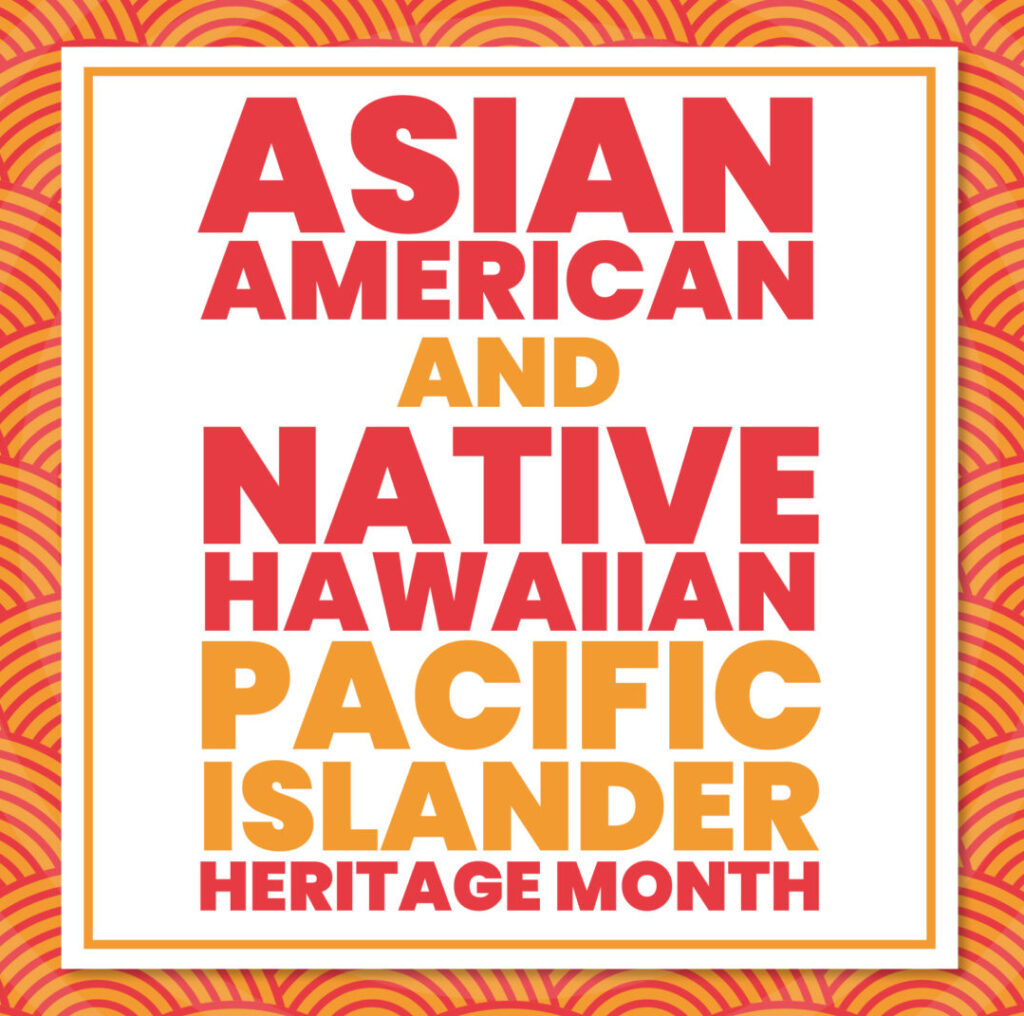“I wasn’t looking for you so I could kill you. I was just looking for someone who could see what I see, feel what I feel.” – Jobu Tupaki, “Everything, Everywhere All at Once”
* * *
In the movie, “Everything, Everywhere All at Once,” the villain, Jobu Tupaki, abandons all sense of self and morality after experiencing everything all at once in the multiverse. She seeks to kill alternative versions of her mother, all to find one who might truly “see” her and validate her feelings.

The quote resonates because for many AANHPIs (Asian American, Native Hawaiian, Pacific Islander), we struggle to be “seen” and our voices heard. Our representation in mainstream American culture has been minimal, if not at times very problematic. How many of us felt ourselves cringing at Long Duk Dong in the John Hughes movie “Sixteen Candles?”
May is Asian American, Native Hawaiian, and Pacific Islander Heritage Month (AANHPIHM) and the theme for 2023 is “Advancing Leaders through Opportunity.” As we shared in another article, our heritage and culture are ever-present and constant, existing beyond one month. However, an identified time designated where our existence and cultures are honored enables us to be more fully seen and our histories validated. For some AANHPIs, our families have been here for many generations, and for others, we recently immigrated with hopes of a better life and a belief in a United States where our families could achieve.
So, as we celebrate AANHPHIM, leaders and members of NAPIC (National Asian Pacific Islander Council, an affiliated council of the American Association of Community Colleges) share stories and activities that illustrate the power and the impact of being visible and represented.
Past stories
Kathi Hiyane-Brown, president of Whatcom Community College in Bellingham, Washington, recalled that her first remembrance of AANHPIs representation was the musical film “The Flower Drum Song” (1961) because it projected so many Asian American stereotypes in Chinatown.
Naomi Story, NAPIC executive director, shared how being from Maui and growing up there in a third-generation working-class family, her experience was different when she arrived in Iowa in the fall of 1968 to go to college. She observed, “My voice and mindset were totally different from my AANHPI friends and colleagues on the mainland. I didn’t realize why I was supposed to be silent or invisible.”
For some of our members, seeing the martial arts expert and actor Bruce Lee was impactful. Lee Lambert, chancellor of Pima Community College (Arizona) recalls seeing his first Asian representation in the media: “My first was seeing Bruce Lee on the TV show, ‘The Green Hornet’ (1966). This was followed by the movie, ‘Fist of Fury’ (1972). As a young kid, I saw AANHPI as clever and a great fighter using Kung Fu. This left me with the impression we are tough-minded, quick, fast and scrappy. No one would mess with us because of Kung Fu.”
Mark Mitsui, retired president of Portland Community College (Oregon) and former NAPIC president, observed that “A lot of people may not know that Bruce Lee studied at the University of Washington and his reading interests flowed across multiple disciplines, combining diverse subjects in new ways, and applying them to his constantly evolving self-expression as a martial artist. At a time when the dominant media stereotype of Asian Americans was as either docile servants or some version of the ‘Yellow Peril,’ he was as cool as water (‘Be like water, my friend.’)”
Mark also shares about how growing up “We also used to have a telephone tree and whenever there was an ‘Asian American sighting,’ we would call our relatives and tell them to tune in to such-and-such channel to see James Shigeta or Nancy Kwan!”
Wyman Fong, vice chancellor of human resources with the Chabot-Las Positas Community College District (California) also recalls what he felt was a somewhat positive Asian American movie, “Dragon: The Bruce Lee Story” (1993).As Wyman explains: “Finally, someone who looks like me in a lead role, not being traditionally emasculated as we are in other movies, but as a hero, with swagger and sex appeal–a Chinese hero, trying to overcome the harsh realities of racism I also understood as a child growing up in Oakland’s Chinatown.”
Wyman also observes, “From Kung Fu to Kung Flu, we still have much dangerous stereotypes to overcome.”
A different time
But we are hopeful. Today in movies and in television, we have AANHPI superheroes and leading characters with storylines that are more reflective of the AANHPI experiences. Thus, recognition and accurate representation, not just in mainstream mass media, but also in American society and culture are not just important but also necessary for current and future generations.
Rosie Rimando-Chareunsap, interim chancellor of the Seattle Colleges, provided her own reckoning when her husband and she were watching the TV show, “Fresh Off the Boat” (2015-2020), with their small children, who are Filipino, Laotian and Thai Americans.
“In the middle of one of the hilarious sitcom episodes, I was moved to tears watching my kids watching the show. I turned to my husband and said, ‘They’ll never know what it felt like to grow up and NOT see themselves reflected in TV and in roles!’…I can watch my kids grow and develop self-concepts and identities WITHOUT a gaping hole in representation like I did!”
Looking forward
It is refreshing and encouraging to see greater diversity and accuracy in our representation. To be more fully known and seen is important. May is a time for recognition and celebration as our many colleges and students embrace our more than 50 communities and cultures! Colleges are celebrating AANHPI Heritage Month in several ways by recognizing AANHPI ethnic cultures and having a range of dialogues of that are impacting AANHPI students and communities.
Shinta Hernandez, dean of the virtual campus at Montgomery College (MC) in Maryland, who has worked to spearhead the college’s recent Asian American Native American Pacific Islander Institution-funded program, noted that MC in April held a kick-off, four-hour festival with more than 350 students and employees.
Anthony Ramos, chief diversity officer at Elgin Community College in Illinois, shared that students on their planning committee are focusing on wellness/mental health. They sought to learn and educate about diversity within the AANHPI communities, as well as the stigma, resilience, intergenerational and cross-cultural perspectives, and perceptions that exist among and within groups.
These are a few and we know there are many more. Representation is important. Remembering and capturing stories of AANHPIs past and present help to educate others and validate who we are and the diversity of our communities. May is special for us as AANHPI leaders and for our students. It is a time that allows us to reflect on how cultural influences our leadership, how we wish to honor those who came before, and recognize current trailblazers.
Representation matters. It influences, it enables and it facilitates equity, justice and empowerment fully.
* * *

Rowena Tomaneng (left) is president of San José City College (California) and president of the National Asian Pacific Islander Council (NAPIC), an affiliated council of the American Association of Community Colleges.
Stephanie Fujii is president of Arapahoe Community College (Colorado) and NAPIC president-elect.





